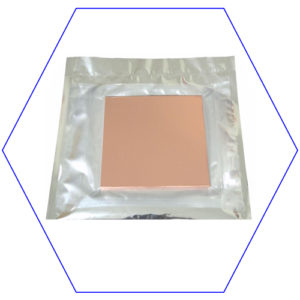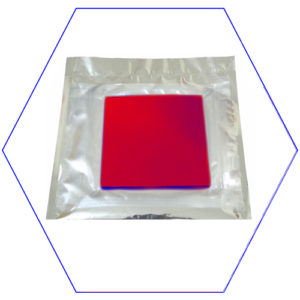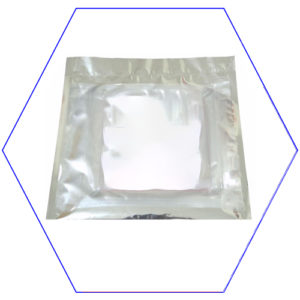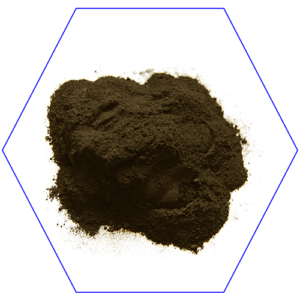Graphene
Showing all 8 results
-
CVD graphene film on a 2mm quartz substrate
37 € – 519 € Select options -
CVD graphene film on a silicon substrate with flint oxide
37 € – 519 € Select options -
CVD graphene film on copper substrate
19 € – 1,377 € Select options -
CVD graphene on customers substrate
15 € – 28 € Select options -
CVD graphene on PET film 100um
37 € – 519 € Select options -
Graphene oxide
69 € – 17,744 € Select options -
Graphene paste
13 € – 152 € Select options -
Graphene powder
Read more
Graphene – is a two-dimensional allotropic modification of carbon formed by a layer of carbon atoms one atom thick in the state of sp 2-hybridization and connected via σ- and π-bonds in the hexagonal two-dimensional crystal lattice. Graphene in recent years has become one of the most intensively studied materials. This is due to it's unique electrical, electrochemical, optical, mechanical and sorption properties. Applications for graphene include electronics, catalysis, sensor manufacture, capacitors, solution various biomedical tasks.
Graphene has high mechanical strength and has a very large and available specific surface area (theoretical value of 2630 m 2 / g 237), as well as high electrical conductivity, which makes this carbon nanomaterial unique. Graphene can be in the form of graphene powder or a dispersion of graphene, as well as reduced from it's oxidized form. Of particular interest is graphene deposited by the CVD method on substrates made of various materials.
Graphene Cost – Changes and Influence
Ever since its discovery in 2004 a lot of research has been devoted to graphene and therefore the graphene costs changes a lot. Nowadays it is considered as one of the most promising materials that will eventually replace other materials like silicon or ITO and thus allowing us to advance our current technologies in a revolutionary manner.
At the time the graphene market is amongst the fastest growing high-tech markets in the world. Global Graphene market revenues grow at a 35 % Compound Annual Growth Rate (CAGR) and it has been projected that the market will reach USD 278 Million by the year 2020. To this day the graphene market is still dominated by Research & Development companies but that is expected to change as large high-tech corporations from all around the world start to implement graphene technology in their products. Roll able displays, semiconductors, batteries – just to name few – are about to create a huge space for graphene and its derivate in the commercial market.
It seems obvious that this two-dimensional crystal is a technology of the future but when does the future start? It can be in a year or in five years or even more – no one can say for sure. However, if we look at the rate by which the graphene grows on the market it is almost impossible to deny that it is going to make its way to the commercial sphere because its costs continue to drop in an exponential manner. It is even expected that the dramatic reduction in graphene costs will soon make graphene cheaper than
silicon.
Graphene Cost – Influence
So, what exactly influences the price of bulk graphene? There are several factors that have impact on the graphene price, but the main ones are the quality /purity of the material as well as the technological process used for its production.
For example, the famous Scotch tape method (also called the exfoliation method) can produce some high-quality Graphene that comes in small amounts of so-called flakes. These Graphene flakes show the best physical properties like high purity, mechanical strength and electrical conduction. The disadvantage of this method is that the exfoliated Graphene usually comes in about a few flakes per square centimetre and the price of such graphene can be about several thousand Euro per flake.
To produce larger quantities of Graphene other methods can be implemented. Graphene oxide that is made by adding oxygen and hydrogen molecules to that of Graphene is relatively cheap form and soluble form of graphene that costs around 400€ per liter. Graphene oxide can be implemented everywhere where high quality Graphene is not required. However, due to its low electrical properties it is not suitable for batteries, screens or other electronic devices.
Other method to obtain graphene is called CVD (Chemical Vapor Deposition). This method can produce relatively high-quality Graphene by creating monolayers in reaction chambers using gases onto a substrate. Although this method has become more cost effective in the past years, its main disadvantage is that it creates a lot of chemical products that may be toxic to the human body. CVD graphene comes in form of small monolayer films that cost from 50€ to 1000€ depending on the size of the film.
The price of the graphene is not uniform, and it varies depending on the quality of the product as well as the method used to obtain the final product. Overall are the prices one of the main arguing points among the Graphene researchers and manufacturers. Also, the change of graphene costs cannot be predicted with certainty because its fate does not lie in hands of some authority, but rather in invisible hands of market.











